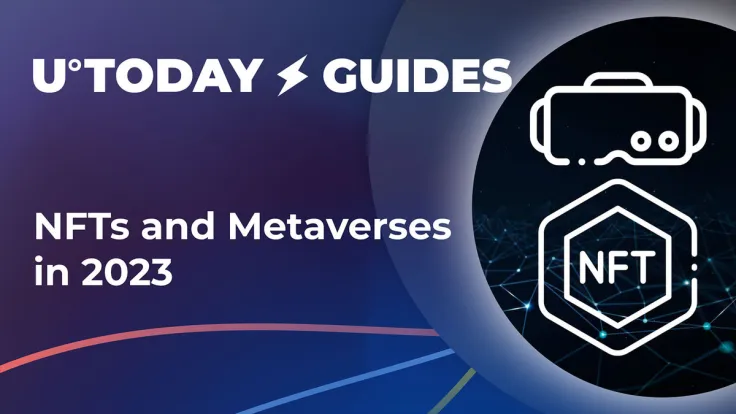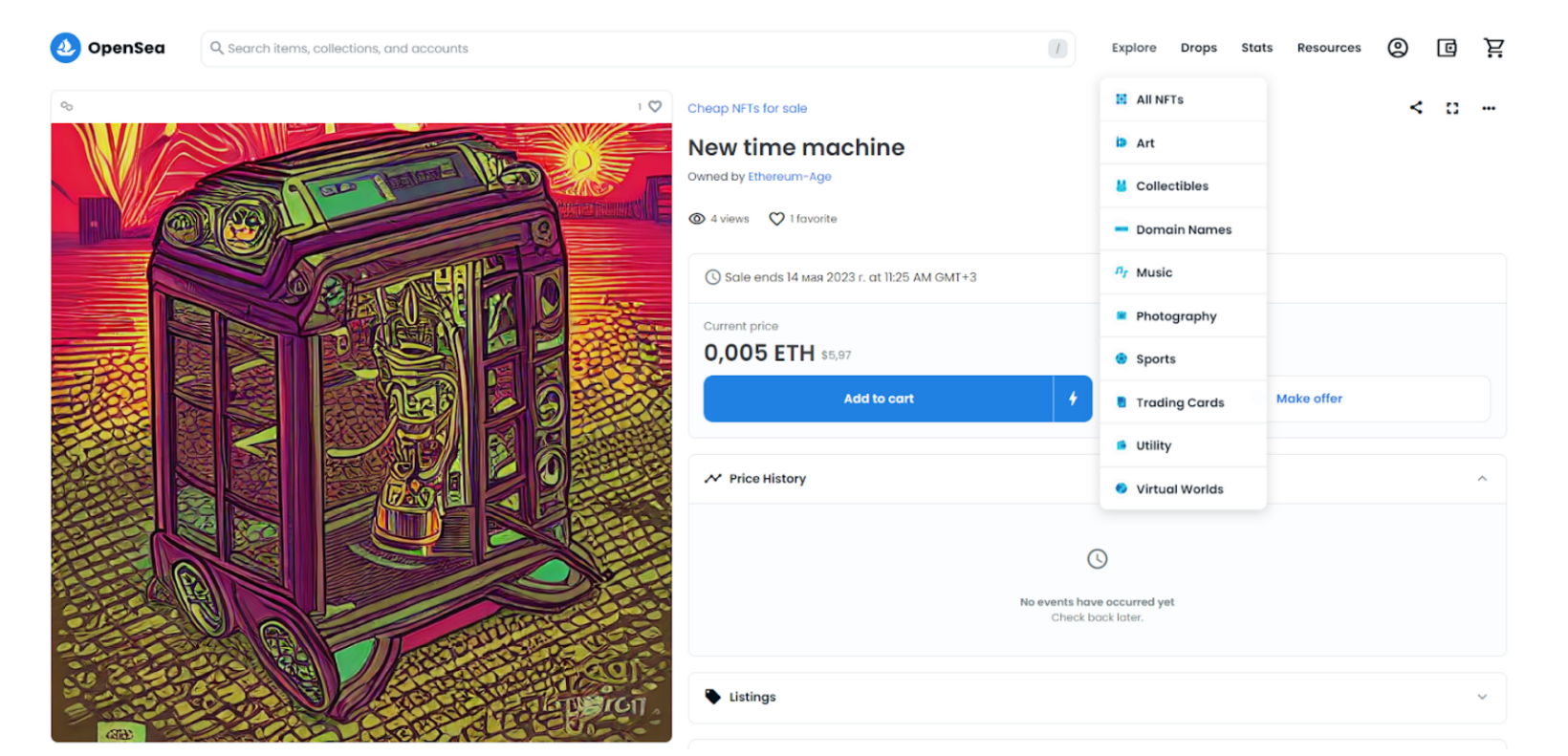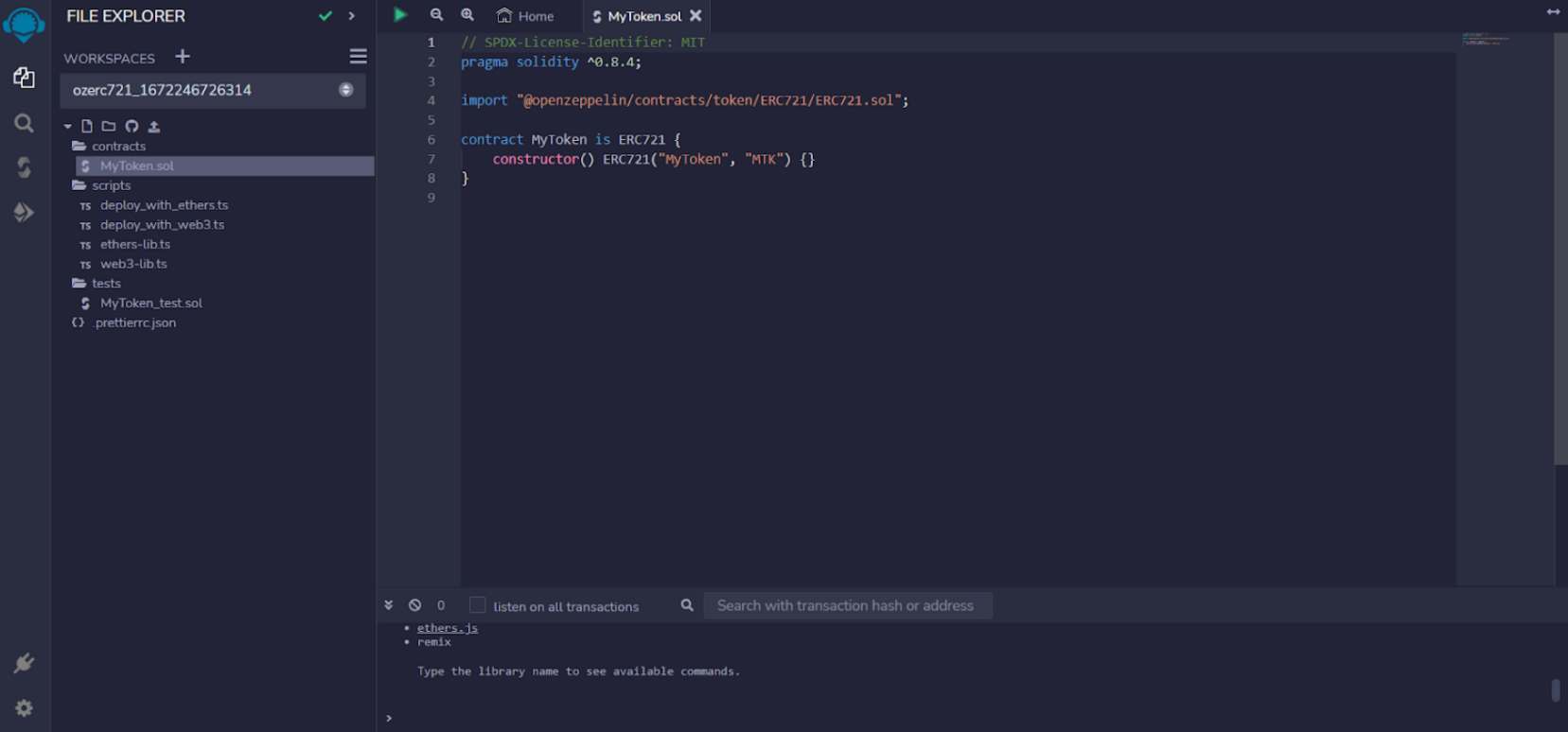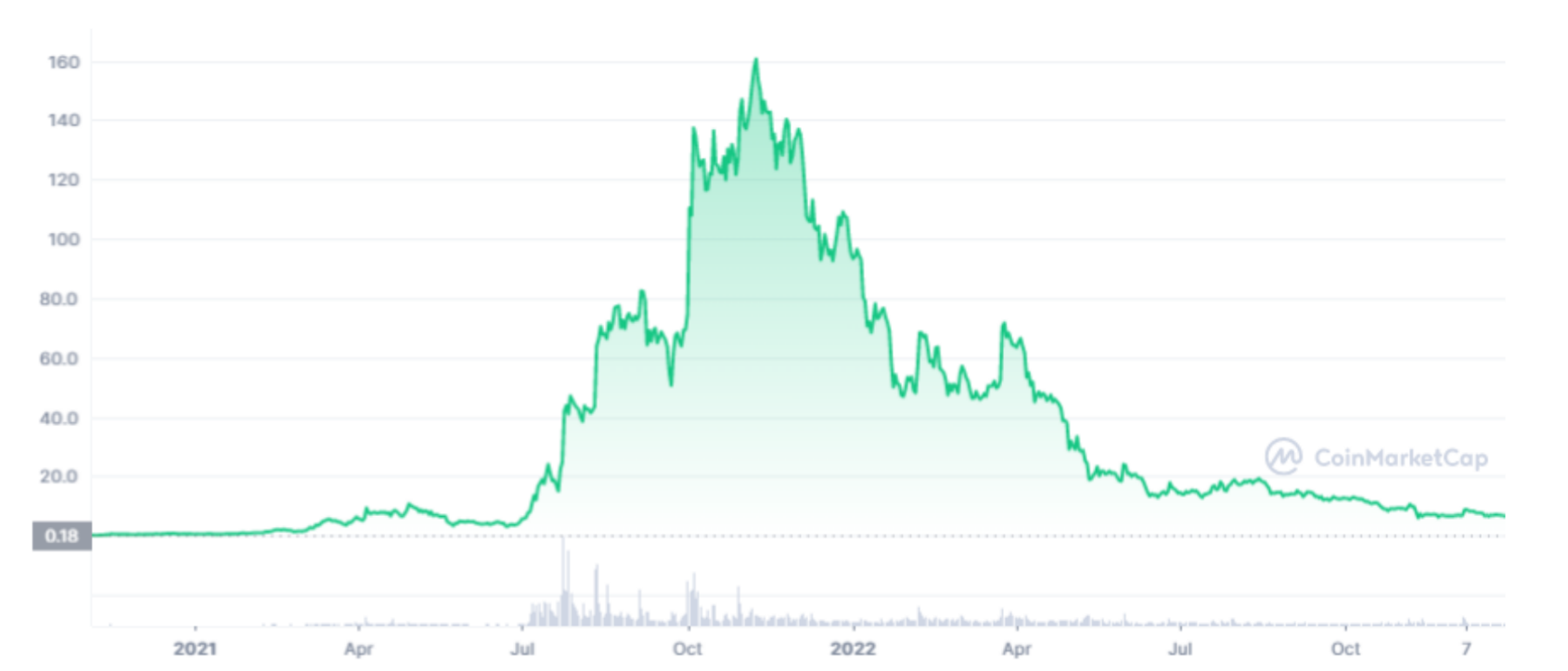
Disclaimer: The opinions expressed by our writers are their own and do not represent the views of U.Today. The financial and market information provided on U.Today is intended for informational purposes only. U.Today is not liable for any financial losses incurred while trading cryptocurrencies. Conduct your own research by contacting financial experts before making any investment decisions. We believe that all content is accurate as of the date of publication, but certain offers mentioned may no longer be available.
- NFTs and metaverses: What to expect in 2023?
- What are NFTs?
- How to buy NFTs
- How to create an NFT and sell it
- NFT collections to watch in 2023
- NFT marketplaces to watch in 2023
- What is the metaverse?
- Why is everyone talking about metaverses?
- How to create metaverse game
- Metaverses to watch (and play!) in 2023: Projects
- Trends in metaverses for 2023
- Final thoughts
NFTs and metaverses were the hottest segments of the Web3 sphere in Q1, 2021-Q2, 2022. However, as U.Today covered in its previous guide, both were the worst sufferers of the ongoing Crypto Winter.
That said, the right moment has come to check out the prospects of non-fungible tokens and blockchain metaverses for 2023. In this text, we will review a number of promising trends and interesting projects as well as a couple of assets crucial for this sphere.
NFTs and metaverses: What to expect in 2023?
As markets are still trapped in a bearish recession, there are some trends that might shape the future of the NFT and metaverses segment in 2023:
- New massive inflow of VC-driven capital is unlikely, so old heavyweights will be dominating the market;
- Both NFTs and metaverses will mature step-by-step: the market will not be interested in copycats of overhyped "Apes," "Mutants" and so on;
- More use cases will be explored in real-world segments: tokenized certificates, diplomas, permissions, validation labels and badges, etc.;
- Metaverses will be used for brand promotion and for conversations among users;
- Metaverse-as-a-Service (MaaS) platforms will gain traction;
- Once bearish market is over, tokens associated with metaverses, NFT marketplaces, GameFis, Move-to-Earn and other related segments will be rocketing once again;
- Despite the new generation of tokens that might emerge in this sphere, the "old" metaverse and NFT-centric tokens will also gain value.
In short, we cannot be sure that metaverses and NFTs will be the hottest segment of the upcoming bull run as they were in 2020-2021, but of course they will remain attractive for investors of various types. With the maturation of the Web3 segment, metaverses and NFTs show no signs of exhaustion.
What are NFTs?
A non-fungible token, or NFT, is a particular type of digital (blockchain-based) token or cryptocurrency. In this case, "non-fungible" means that it cannot be replaced by its equivalent: the uniqueness of every non-fungible token can be verified. That said, every USDT is equal to any other USDT, while every Bored Apes Yacht Club token is a unique one.
Technically, a non-fungible token is a certificate of ownership. By "owning" this or that NFT, we mean that account XYZ on blockchain ABC (Ethereum, BNB Chain, Polygon or any other programmatic blockchain that supports smart contracts) is considered an owner of NFT #123 starting from this or that block.
Typically, every NFT token includes the cryptocurrency token itself (smart contract) and associated piece of content (image, song, video, document, text and so on). By purchasing NFT #123 token, its buyer also gets the related content, and, in some cases, IP rights for this content.
How to buy NFTs
Non-fungible tokens (NFTs) can be purchased through NFT marketplaces, a special class of trading platform used for NFT auctions. Auctions remain the most popular way of selling NFTs. To measure price dynamics, traders and analysts track the "floor price," the starting price level of the auction.
However, some NFTs are offered with fixed rates. Typically, this applies to low-cost collections with prices not exceeding 0.1-0.2 Ether (ETH). Also, some NFT projects distribute their tokens for free among participants of the airdrops. In this case, supporters are invited to "claim" NFTs prior to their distribution.

Also, in-game NFTs can be awarded as bonuses for completing missions or winning in tournaments. Tokenized land plots can be claimed by holders of this or that sum of core native crypto assets of GameFi. To sum up, NFTs can be integrated into various economic designs from intuitive to multi-level and sophisticated.
How to create an NFT and sell it
As major non-fungible token collections spiked to record-breaking prices in 2021, more and more Web3 users are seeking the opportunities to try their hand at digital art creation, promotion and trading. Here are some options for those who are going to create NFTs without previous expertise.
How to create NFTs with Remix
Tech-savvy users can try to create digital tokens on Ethereum (ETH), Polygon (MATIC) and other EVM-compatible chains from scratch.
To do so, we need to customize the Remix integrated development environment (IDE), upload our content to the Inter-Planetary File System (IPFS), download ready-made code templates by OpenZeppelin (for ERC-721, the standard for tokens for Ethereum’s NFTs) and compile the code through a built-in compiler.

In order to deploy newly-created NFTs to the Ethereum (ETH) network, we need to connect our MetaMask with an available balance to handle gas costs. Gas costs can be covered with "real" Ethers (ETH) or testnet tokens from faucets on the Goerli and Kovan testnets.
These operations require a basic level of expertise in Solidity, a core Ethereum programming language. As such, cryptocurrency users with no programming skills typically choose no-code environments where NFTs can be created in a Lego-like manner.
How to create NFTs with no code
On the majority of NFT marketplaces, NFTs can be created without even a single line of code. For instance, on OpenSea, to mint an NFT and start offering it, users just need to enter "Create" mode and integrate their MetaMask or any other noncustodial wallet for the Ethereum (ETH) network.
Then, the system will ask you to upload the content, pay a minting fee and start offering. However, there is another opportunity to start offering NFTs without paying gas fees. For instance, Mintable application allows its users to create NFTs totally free of charge thanks to its integration with Immutable X (IMX) second-layer solution.

On Mintable, users can also create NFTs by just uploading content and connecting MetaMasks to Mintable’s platform. By choosing the "gasless minting" option, users can start working with new NFTs without the necessity of paying gas fees.
NFT collections to watch in 2023
As we mentioned above, both old and newly launched NFT collections will look attractive for investors in 2023. As such, the right moment has come to observe old champions on and promising newcomers to the NFT market.
Mutant Apes
Mutant Apes Yacht Club, or Mutant Apes, is an offshoot of Bored Apes Yacht Club (BAYC), the most expensive and overhyped NFT collection of the Web3 segment. MAYC features 20,000 Mutant Ape-themed NFTs; the first generation was created on Aug. 28, 2021. Yuga Labs, creator of BAYC, announced that Mutant Apes can only be minted by BAYC holders by "exposing existing Bored Apes to a vial of Mutant Serum."

Technically, this means the integration of BAYC token with the Serum NFT smart contract. At the same time, 50% of the initial generation was sold through a Dutch auction that raised $96 million in less than one hour.
This collection was launched to attract an additional audience to the NFT segment after BAYC tokens were sold off. As of press time, the collection is the second largest NFT drop by market capitalization. Its floor price peaked at 40 Ethers (ETH) in April 2022.
Azuki
Released in January, 2022 by Churi Labs, a Los-Angeles based fully anonymous digital artist team, Azuki collection features 10,000 avatars in the Japanese style. All Azuki avatars are commonly referred to as The Garden. Every character comes with its own hair style, garments and accessories: some of them are portrayed with swords, a cup of coffee, a skate board and so on. The collection’s design is curated by Zagabond, Hoshiboy and Location TBA, veterans of Meta (formerly Facebook).

The Azuki release pays homage to traditional Japanese anime art. The initial release of Azukis featured 8,700 avatars priced at $3,400 each. The first generation of Azukis was sold out in a matter of minutes. Another portion of NFTs was released by developers in a private sale that raised $2 million.
Not unlike MAYC, Azuki’s popularity exploded in Q1, 2022, while its floor price also leaped teh milestone of 40 Ethers per token. Azuki NFTs are available on LooksRare and OpenSea marketplaces.
CloneX
CloneX is a representative of a new generation of NFT projects launched in mid-2022. CloneX is the first mainstream collection by RTFKT (pronounced “artifact”), a leading metaverse studio acquired by Nike. Developed in partnership with top Japanese artist Takashi Murakami, CloneX made it into the elite club of the blue-chip NFT collection.

A total of 20,000 CloneX NFT avatars belong to six “regular” subclasses, or DNA types: human, robot, angel, demon, reptile, undead and two premium subclasses: Murakami clones and aliens. CloneX NFTs are available on various platforms, including OpenSea, Rarible, X2Y2, LooksRare and CloneX’s main domain.
CloneX’s floor price printed its all-time high in April 2022 at 19.5 Ethers (ETH).
NFT marketplaces to watch in 2023
While more and more projects are starting to sell their tokens through built-in modules on main websites, NFT marketplaces remain key elements of the segment’s infrastructure.
Rarible
Launched in 2020 in Moscow by Alex Salnikov and Alexei Falin, Rarible marketplace promotes itself as one of the first cross-chain NFT aggregators. The platform offers a seamless and newbie-friendly technical basis for NFT collections on Ethereum (ETH) and EVM-compatible blockchains.
Rarible’s killing feature is its core native cryptocurrency RARI that underpins the tokenomic design of the marketplace. RARI is both a utility and governance asset: the protocol migrates to a full decentralization model to ensure fair and inclusive project governance.
Also, RARI tokens can be staked to generate periodic rewards in veRARI assets proportionally to the amount of tokens locked.
Binance NFT
Binance NFT is a non-fungible token marketplace by world-leading cryptocurrency ecosystem Binance (BNB). Launched in June 2021, Binance NFT, in the first six months of its operations evolved into the world’s largest curated marketplace for digital art. Initially, Binance NFT was designed as a multi-chain marketplace that supports both BNB Chain (then-Binance Smart Chain) and Ethereum.
Binance NFT works as a platform for new-gen artists as well as for the tokenized collections of the world’s most prominent artists: it sold NFTs with artwork by da Vinci and Van Gogh from St. Petersburg’s State Hermitage Museum.
Also, Binance NFT is well known due to its collaborations with media, sports and culture celebrities, as well as for its education program for Web3 enthusiasts interested in NFTs.
LooksRare
Launched in January 2022, LooksRare (LOOKS) is a first-of-its-kind rewarding NFT marketplace as its core native asset LOOKS is designed to stimulate trading activity. “By NFT people, for NFT people” is its motto that highlights its community-driven approach to development and marketing.
To attract users from the largest NFT marketplace OpenSea, the LooksRare team airdropped LOOKS to all OpenSea users that were active in H2, 2021. LOOKS tokens can also be staked to generate periodic rewards in the token itself or Wrapped Ethers (WETH); APY rates for some staking programs surpass 50%.
LooksRare imposed 2% sales fees on all offerings, which is lower than that of OpenSea. Also, to claim LOOKS tokens, LooksRare users were required to list at least one NFT on the marketplace. In early 2022, the platform was criticized for alleged “wash trading” as its clients were selling NFTs to themselves to generate activity rewards in LOOKS.
What is the metaverse?
The very term “metaverse” was coined by American sci-fi writer Neal Stephenson in his 1992 novel Snow Crash. In general, metaverses should be referred to as sophisticated ecosystems with virtual reality (VR) or augmented reality (AR) instruments that are designed to mirror real-world experiences.
Meanwhile, in the cryptocurrencies sphere, this term is used to describe all digital products (games, simulators, VR/AR locations) with immersive elements where blockchains are used for data transfer. Most commonly, cryptocurrencies are somehow used as payment methods in projects that are marketed as metaverses.
Metaverses in crypto gained popularity during the 2020-2021 bullish recovery. However, the general definition of what metaverse is has not ossified yet. As such, this term is used as a marketing instrument for the vast majority of teams promoting their products as metaverses.
Why is everyone talking about metaverses?
Largely, the hype around metaverses should be attributed to skyrocketing prices of associated cryptocurrencies in the 2021 bullish run. Namely, The Sandbox (SAND) rocketed by 1,000% in October 2021, while Axie Infinity (AXS) demonstrated a mind-blowing 50x run in Q3, 2021. During the same period, Illuvium (ILV) rocketed by 60x. Meanwhile, by press time, all these cryptocurrencies are changing hands down 93-98% from the all-time high.

The same rallies were registered in the segments of in-game assets and objects from virtual equipment and tools to land plots and buildings that can generate passive income for their owners.
Also, the 2021 metaverse euphoria was triggered by aggressive marketing fueled by huge marketing budgets spent by corporations and VCs on supporting their metaverse ventures. That said, despite the fact that the metaverse segment looks really promising and ground-breaking in some ways, the recent interest spike was made by marketers, not engineers.
How to create metaverse game
As new segments started making waves, the next generation of enthusiasts began trying to find out how to create metaverses themselves. Actually, this ambitious project cannot be created without specific coding, engineering and design skills.
Simply put, creators of metaverses should start by building a “frontend,” i.e., the Web2-like gaming environment, a “regular” video game. Then, an architecture of smart contracts should be created in languages Solidity, Rust or Move. It should reflect the economics and gameplay logics of the game.
Then, the metaverse database should be moved to IPFS — not unlike our previous experience of building NFTs collections. To make the gaming experience more immersive, metaverse creators can attach an additional layer of AR/VR modules. Then, all three parts — IPFS-stored database, frontend and smart contracts — should be integrated between each other.
Metaverses to watch (and play!) in 2023: Projects
While many projects in the NFT and metaverse spheres ceased development and marketing efforts, some teams are still delivering on their roadmaps despite the bearish recession.
Illuvium
Being available in a public beta version, Illivium is a cross-protocol open-world role-playing game (RPG) initially released on Ethereum (ETH) blockchain. Besides blockchain technology, Illuvium employs scaling solution Immutable X for minimum fees and enhanced throughput. In Illuvium, players explore the digital world and look for native creatures (Illuvials).

On Illuvium, players can compete against each other for in-game assets (NFTs). Also, experienced Illuvium enthusiasts can grow their illuvials to unlock new game levels. In the Web2 world, illuvials can be compared to Pokemons. By press time, over 19,000 land plots in Illuvium metaverse have been sold to Ethereum (ETH) gaming pros and newcomers.
Currently, three modes of Iluvium are being unveiled: Arena, Zero and Overworld. Illuvium Arena is available in beta, while two advanced modes will be made public soon. Illuvium’s native token, dubbed ILV, underpins the tokenomics of the project acting as its governance and utility asset.
My Neighbor Alice
Launched in January 2021, My Neighbour Alice game invites its players to a magic world where cryptocurrency holders can buy and sell NFTs, purchase virtual land, meet each other and socialize. Active on the top of Ethereum (ETH), Cromia and BNB Chain (BSC), My Neighbor Alice is one of the first decentralized games to become available on Steam and other mainstream gaming marketplaces.

Houses, fences, animals and plants are core in-game assets to sell in My Neighbor Alice’s world. People can create alliances, develop complex gaming strategies and so on. The game is available in a free-to-play mode, but for missions and levels with rewards in crypto, players should own ALICE tokens.
Old but Gold: Sandbox, Decentraland, Axie Infinity
Metaverse’s Big Three are going through a painful bearish recession with 95-99% losses of core token value, but they still remain popular among cryptocurrency enthusiasts with various levels of expertise.
The Sandbox is an Ethereum-based metaverse that allows the creation of 3D avatars of persons, entities, brands and so on. Also, it works as a platform for interaction between the ecosystems of various metaverses. SAND token is a building block of its economic architecture.
After crucial upgrades, Decentraland and its token, MANA, onboarded new generations of gamers. Running since February 2020, this gamified metaverse should be considered a veteran of the segment.
Targeted by much criticism over its unsustainable financial model, Axie Infinity (AXS) remains in focus for professionals of the GameFi and NFT segments. In December 2022, it was decided to advance the level of its decentralization; this, in turn, triggered a double-digit price spike.
Trends in metaverses for 2023
Here are some spheres that might be trending in 2023 in the metaverse segment. Largely, they are about the corporations’ metaverse journeys.
Corporate metaverses
For global corporations, working in metaverse unlocks new opportunities for promotion, business development and building marketing strategies. In this case, metaverses are used as a new-gen way to interact with people (clients, employees, competitors) in a 100% virtual environment.
For instance, FMCG heavyweight Mondelez moved the process of new staff onboarding to metaverse in order to optimize the processes of testing and training. New employees can see training videos and virtually visit all Mondelez units without leaving the training office. Also, Nestle’s Purina employs metaverses to educate new staff and demonstrate business processes to newbies.

Due to its highly immersive nature, metaverse is an ideal environment for the testing of design prototypes. German automobile producers BMW and Mercedes-Benz are already experimenting with digital twins of new cars, demonstrating them in corporate metaverses. Luxury outfits producer Balenciaga also demonstrates new models in metaverse before releasing them “offline.”
VR/AR
Virtual reality (VR) and augmented reality (AR) technologies are of crucial importance for the metaverse segment as both technologies are designed to deliver an immersive 3D environment and real presence.
Combined with cutting-edge VR/AR tooling, including Oculus Quest, Windows Mixed Reality, VIVE and other mainstream VR glasses, visitors can explore metaverses, interacting with brands and their products.
Besides that, VR and AR technologies can be integrated in metaverses to invite Web3 enthusiasts to eccentric social campaigns. For instance, VR innovator Vrse launched a Virtual Giving Trip charity campaign to allow its clients to purchase a pair of shoes for people in need without actually visiting shops.
Metaverses as marketing
Since 2020-2021, numerous brands have started leveraging metaverses to advertise their products and raise brand awareness. Actually, this strategy has a lot in common with product placement in video games. In Web2, major brands were represented in GTA and other mainstream RPGs.
Not unlike that, luxury brand Gucci opened Gucci Garden in Roblox metaverse. In the first two weeks of its operations, it was visited by almost 20 million GameFi fans from all over the world. Also, Roblox onboarded a virtual skate park by world-leading equipment producer Vans.
The Sandbox mainstream metaverse is the leader when it comes to the number of brands that established their presence. By the end of 2022, it scored partnerships with The Sims, Pokémon GO and Animal Crossing.
Final thoughts
Simply put, both the NFT and metaverse segments will remain relevant in 2023. The two segments will migrate to far more mature use cases instead of entertaining ones. The inflow of VC capital will likely decrease.
Meanwhile, the brands’ interest in metaverse-based marketing will not vanish: new opportunities for advertising will be available in upcoming and existing projects.
Also, the ways average users can benefit from interacting with metaverses will remain unchanged: trading in-game assets or territories, breeding virtual tokenized characters, buying/selling native cryptocurrencies of NFT- and metaverse-themed products and competing against each other in virtual tournaments.
 Dan Burgin
Dan Burgin Vladislav Sopov
Vladislav Sopov U.Today Editorial Team
U.Today Editorial Team